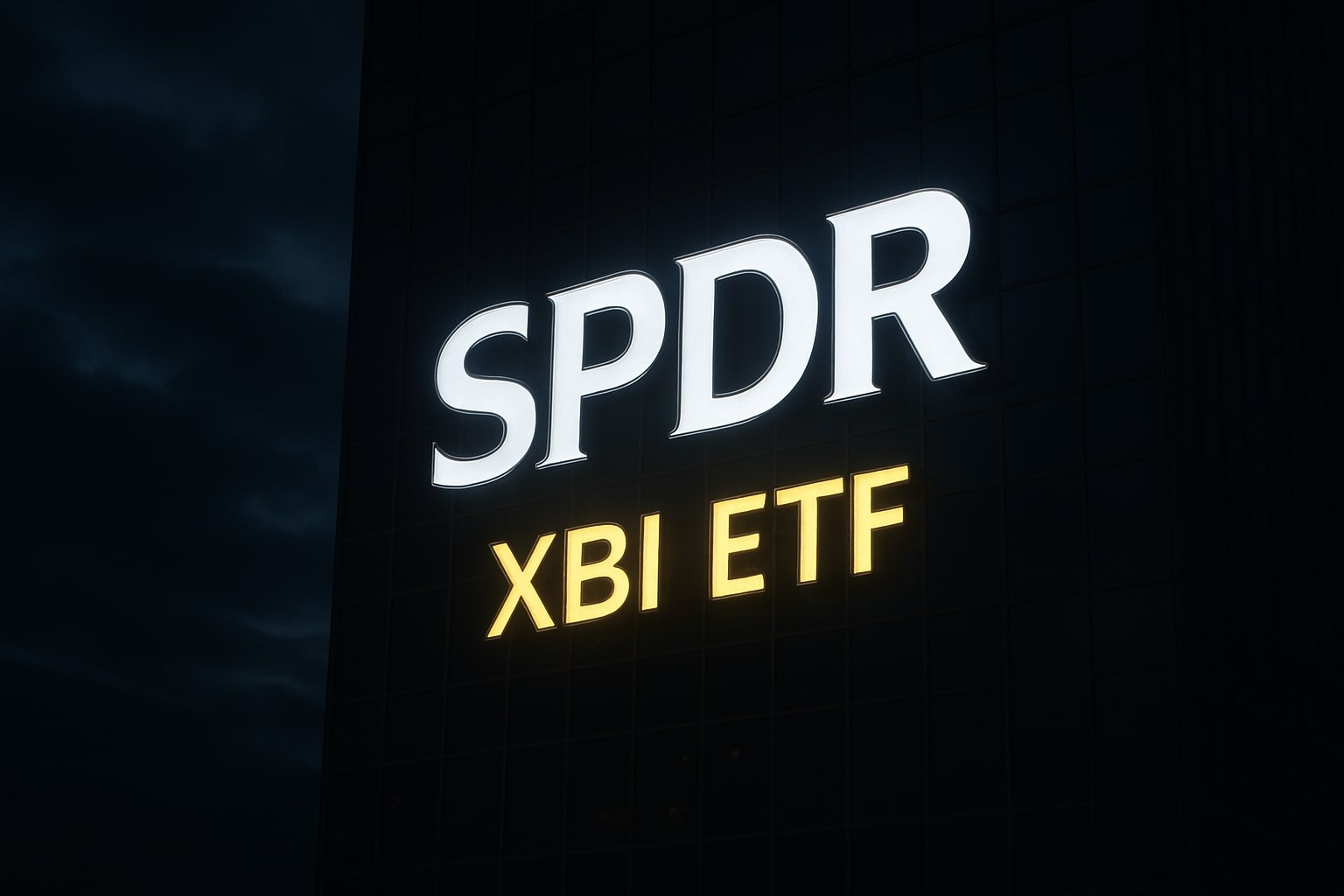
Bitcoin BTC-USD Slides to $94K as Massive ETF Flows Collide With IBIT Outflows and Liquidity Stress
BTC-USD battles heavy selling as BlackRock’s IBIT loses $463M, ETFs inject $523M, long-term holders dump 815,000 BTC, and critical support at $92K becomes the line between stability and breakdown | That's TradingNEWS
Bitcoin Etf Inflows Pressure Build As Btc-Usd Drops Toward The $94,000 Pivot
Bitcoin’s retreat into the $94,050–$96,466 range reshaped the entire ETF-driven liquidity landscape, with every intraday move now dictated by institutional flows rather than retail speculation. The failure to stabilize above $103,000 after repeated attempts marks a structural weakening that coincides with severe outflow spikes. Even a single-session surge of $523 million in ETF inflows couldn’t keep BTC-USD above $95,000, proving how strongly profit-taking and leveraged unwind cycles have absorbed new demand. The deeper issue is the collapse in ETF unrealized profits, which peaked near $23.9 billion in early October but plunged to $7.8 billion by mid-November as Bitcoin’s rally failed to hold $104,000–$107,000. Jim Bianco’s data revealing that $59 billion of ETF inflows carry an average cost basis of $90,146 puts current price action in a dangerous position: only a 4.7% gain above aggregate breakeven, vulnerable to flipping negative if BTC touches $92,000. The year-to-date performance of just +2.6% shows how thin the margin of bullish conviction really is, especially as long-term holders unload into weakness for the first time since January 2024.
Ibit Etf Weight Dominates Market Trends As Blackrock’S Flows Drive Intraday Volatility
The gravitational center of Bitcoin’s institutional landscape is BlackRock’s IBIT, the world’s most systemically important Bitcoin ETF, now trading at $53.48 after a 3.80% drop, before after-hours stabilizing to $53.91. With a $164.14 billion market cap and an intraday range of $54.09 open, $55.28 high, $53.38 low, IBIT dictates price rhythm across both spot and derivatives markets. During the latest washout, IBIT alone saw $463.10 million in outflows—greater than the combined redemptions of multiple competing ETFs. This compression of flows coincides with Bitcoin hovering just a few percentage points above the ETF cohort’s cost basis. If IBIT redemptions deepen, BTC-USD could face a liquidity void that accelerates declines toward $91,600, the first major absorption zone, with $83,000 emerging as the deeper structural support. IBIT’s influence is so strong that it has become a proxy for institutional sentiment; when IBIT bleeds, Bitcoin follows instantly. The ETF also trades more tightly than Bitcoin-linked equities, reflecting how institutional players view direct BTC exposure as cleaner and more responsive to macro shifts.
Institutional Risk Appetite Rotates As Microstrategy’S $65.047B Bitcoin Position Pressures Mnaw
Institutional positioning is rapidly evolving as the largest holders adjust exposure under escalating volatility. MicroStrategy now commands a $65.047 billion Bitcoin portfolio, but its mNAV slid to 0.993, showing its equity valuation has dipped below net asset value—an early sign institutions are no longer paying premiums for levered Bitcoin proxies. At the same time, long-term holders have liquidated more than 815,000 BTC within a month, the heaviest selling wave since early 2024, reinforcing the downward pressure that ETFs are struggling to counter. Bitcoin’s inability to hold the $100,600–$108,500 band—an area historically tied to institutional reallocation—signals a weakening floor beneath the market. Meanwhile, Ethereum ETFs recorded $1.071 billion in outflows during the same week that Bitcoin funds captured $523–$524 million, reflecting a flight from ETH amid regulatory ambiguity and technical underperformance. The divergence is becoming decisive: institutions still prefer Bitcoin, but the inflow magnitude is too small to offset persistent long-term distribution and leveraged liquidations.
Read More
-
XBI ETF Climbs to $114 on Biotech Funding Revival, M&A Acceleration, and Regulatory Tailwinds
16.11.2025 · TradingNEWS ArchiveStocks
-
XRP ETF Momentum Explodes as XRPI Hits $13.30 and XRPR Trades at $18.61 While Bitcoin Slumps to $95K
16.11.2025 · TradingNEWS ArchiveCrypto
-
Natural Gas Price NG=F Breaks to $4.65 on Historic LNG Demand and Winter Shock
16.11.2025 · TradingNEWS ArchiveCommodities
-
USD/JPY Price Forecast - Yen Hits 155.04 High as Intervention Fears Rise and Fed Signals Boost Dollar
16.11.2025 · TradingNEWS ArchiveForex
Mining Expansion Accelerates As Hyperscale Data And Canaan Increase Btc Inventories Into Weakness
Mining operations are scaling in parallel with ETF volatility, creating a dual dynamic of long-term accumulation against short-term risk. Hyperscale Data deployed 4,092 new Bitmain S21+ and S21 Pro miners, part of a $100 million hybrid mining–acquisition strategy designed to grow treasury exposure regardless of price swings. Canaan expanded its holdings to 1,610 BTC and 3,950 ETH, reaching a record treasury size while accelerating global mining deployment. This expansion strengthens long-run network fundamentals but heightens near-term vulnerability: miner balance sheets become stressed when BTC fails to reclaim levels like $97,000 or $103,000. If BTC-USD declines into the low $90,000s, miners with thin margins may be forced into spot selling, amplifying downward momentum. This interplay between growing miner inventories and falling BTC price is a hallmark of pre-capitulation phases in prior cycles and now forms a structural layer beneath ETF-driven positioning.
Liquidity Drain Intensifies As Sentiment Craters And Fear Index Drops To 16
Market psychology has deteriorated sharply, marked by the Fear & Greed Index plunging to 16, a level associated with forced-selling environments and reflexive flushes. With more than 88% of open Bitcoin positions held on the long side, the market is exposed to cascading liquidations should BTC lose the $94,500–$92,000 demand block. CryptoQuant’s Bull Score Index collapsing from 80 in early October to 20 by mid-November illustrates how quickly momentum has evaporated. Repeated failures to reclaim the 365-day MA at $102,000 highlight the weakness, and the RSI near 34 shows fading strength without any constructive divergence. If BTC closes below $92,000, the path toward $91,600 and then $83,000 becomes the primary route. Only a decisive reclaim of $103,000 followed by a breakout toward $106,700 would shift the balance of power back to buyers.
Cross-Asset Rotation Strengthens As Solana And Xrp Etfs Capture Capital Away From Bitcoin
The ETF environment is no longer dominated exclusively by Bitcoin and Ethereum. Solana saw $12.04 million in new inflows and continues one of the strongest multi-week streaks in the entire crypto ETF space. Even more disruptive was the debut of the XRP ETF (XRPC) from Canary, which recorded a stunning $243.05 million in first-day inflows—more than double the first-day performance of BlackRock’s Bitcoin ETF in 2024. These flows highlight that diversification is accelerating: capital is rotating across assets as investors hunt momentum outside BTC-USD. This redistribution of ETF inflows affects Bitcoin directly. When high-volume ETF capital migrates to Solana or XRP, Bitcoin loses the inflow buffer it historically depended on to offset long-term holder selling and miner expansion. The current ETF landscape is no longer monolithic; it is competitive, fragmented, and tactical.
Market Position Rating For Btc-Usd And Etf Structure After Full Data Integration
After integrating and restructuring every data point across ETF flows, IBIT price action, liquidity erosion, unrealized profit compression, sentiment collapse, long-term holder distribution, Solana and XRP ETF rotation, mining expansion, MicroStrategy’s exposure, and volatility clusters, the directional stance becomes clear.
BTC-USD is a HOLD with a near-term bearish tilt and long-term bullish foundation.
Short term remains fragile until BTC reclaims $103,000 and ETF unrealized profits widen.
Downside risk intensifies if BTC loses $92,000, putting ETF cost bases underwater and triggering redemptions.
Long-term remains structurally bullish due to miner accumulation, institutional preference, and treasury scaling initiatives.

















